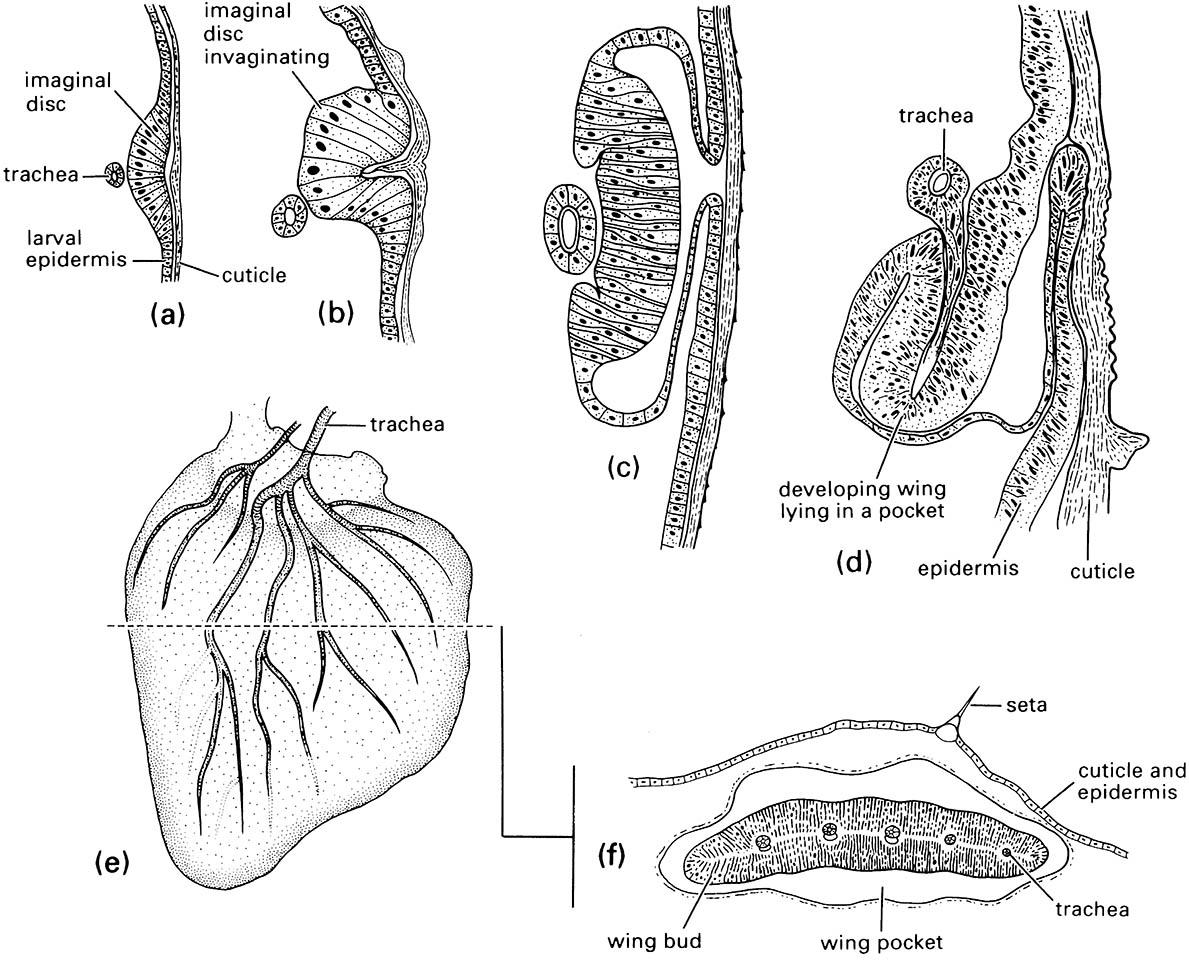6.2. Life-history patterns and phases
Growth is an important part of an individual’s ontogeny, the developmental history of that organism from egg to adult. Equally significant are the changes, both subtle and dramatic, that take place in body form as insects molt and grow larger. Changes in form (morphology) during ontogeny affect both external structures and internal organs, but only the external changes are apparent at each molt. We recognize three broad patterns of developmental morphological change during ontogeny, based on the degree of external alteration that occurs in the postembryonic phases of development.
The primitive developmental pattern, ametaboly, is for the hatchling to emerge from the egg in a form essentially resembling a miniature adult, lacking only genitalia. This pattern is retained by the primitively wingless orders, the silverfish (Zygentoma) and bristletails (Archaeognatha) (Box 9.3), whose adults continue to molt after sexual maturity. In contrast, all pterygote insects undergo a more or less marked change in form, a metamorphosis, between the immature phase of development and the winged or secondarily wingless (apterous) adult or imaginal phase. These insects can be subdivided according to two broad patterns of development, hemimetaboly (partial or incomplete metamorphosis; Fig. 6.2) and holometaboly (complete metamorphosis; Fig. 6.3 and the vignette for this chapter, which shows the life cycle of the monarch butterfly).
Developing wings are visible in external sheaths on the dorsal surface of nymphs of hemimetabolous insects except in the youngest immature instars. The term exopterygote has been applied to this type of “external” wing growth. In the past, insect orders with hemimetabolous and exopterygote development were grouped into “Hemimetabola” (also called Exopterygota), but this group is recognized now as applying to a grade of organization rather than to a monophyletic phylogenetic unit (Chapter 7). In contrast, pterygote orders displaying holometabolous development share the unique evolutionary innovation of a resting stage or pupal instar in which development of the major structural differences between immature (larval) and adult stages is concentrated. The orders that share this unique, derived pattern of development represent a clade called the Endopterygota or Holometabola. In the early branching Holometabola, expression of all adult features is retarded until the pupal stage; however, in more derived taxa including Drosophila, uniquely adult structures including wings may be present internally in larvae as groups of undifferentiated cells called imaginal discs (or buds) (Fig. 6.4), although they are scarcely visible until the pupal instar. Such wing development is called endopterygote because the wings develop from primordia in invaginated pockets of the integument and are everted only at the larval—pupal molt.
The evolution of holometaboly allows the immature and adult stages of an insect to specialize in different resources, contributing to the successful radiation of the group (see section 8.5).

This cosmopolitan and polyphagous bug is an important world pest of food and fiber crops. (After Hely et al. 1982)

(After Johnson & Lyon 1991)

A wing imaginal disc in an (a) first-instar larva, (b) second-instar larva, (c) third-instar larva, and (d) fourth-instar larva; (e) the wing bud as it appears if dissected out of the wing pocket or (f ) cut in cross-section in a fifth-instar larva. ((a-e) After Mercer 1900)

